النوع الاجتماعي والشمول
يمثل النوع الاجتماعي والعمر والقدرات وغيرها من السمات الفردية أو المتعلقة بالسياق فرصًا وتحديات مختلفة لتقديم المساعدات النقدية والقسائم للأشخاص الذين يعانون من الأزمات بطريقة كريمة.
بين الجهات الفاعلة الإنسانية، هناك اعتراف متزايد بالاحتياجات والقيود المحددة للأشخاص ذوي القدرات المختلفة، وكبار السن، الأشخاص من مختلف الأجناس، وخاصة النساء، والأشخاص المتنقلين. وإلى جانب ذلك، هناك تقدير متزايد للحاجة إلى تدابير مصممة خصيصًا وحساسة تضمن إدماجهم بشكل فعال.
إن دعم احتياجات الأشخاص المتنوعين من خلال المساعدات النقدية والقسائم يتجاوز مجرد جعلهم مجموعة مستهدفة؛ بل يتعلق الأمر بالمشاركة الهادفة، والتصميم والتنفيذ الهادفين، وتعديل البرامج لتلبية احتياجات المجموعات المختلفة بكرامة. وتسير نهج شامل جنبا إلى جنب مع المساعدات التي تركز على الناس.
الأولويات الحالية
ستواصل شبكة CALP تشجيع الجهات الفاعلة في مجال المساعدات النقدية على توسيع نطاق تركيزها لتكون أكثر شمولاً وتدعم فهمًا أعمق لكيفية تجاوز المساعدات النقدية والقسائم إلى ما هو أبعد من فكرة “عدم إلحاق الضرر” نحو تلبية احتياجات مختلف الأشخاص بشكل مناسب وبطرق آمنة وكريمة.
سنعمل على رفع مستوى الخبرات والمبادرات المتعلقة بالمساعدات النقدية والقسائم والنوع الاجتماعي، والمساعدة النقدية الشاملة للأشخاص ذوي الإعاقة، والعمل مع مختلف الأعراق والهويات الثقافية، ومجموعات الأقليات، والأشخاص ذوي الهويات الجنسية المتنوعة، والفئات العمرية.
ستسعى CALP أيضًا إلى جعل عملها متاحًا قدر الإمكان.
محتوى متميز

فيديو التعلم المصغر: المساعدات النقدية والقسائم والنوع الاجتماعي
Blog Post
يُقدم هذا الفيديو نظرة عامة على العلاقة بين النوع الاجتماعي والمساعدات النقدية والقسائم (CVA) التي تتمحور حول دورة المشروع الإنساني، والتي تشمل: التقييم وتحليل الاستجابة: كيفية تعديل عمليات التقييم لتحقيق انعكاس أكثر...

نتائج جندرية أفضل في المساعدة الغذائية من خلال البرمجة التكميلية ومتعددة الوسائط
إرشادات وأدوات
اقُتبست ورقة النصائح هذه من تقرير البحث، «نتائج جندرية أفضل في المساعدة الغذائية من خلال البرمجة التكميلية ومتعددة الوسائط .»
سعت الدراسة إلى الإجابة عن »كيف يمكن لعمليات التصميم 1 والتنفيذ والمراقبة للمشاريع التي...

ملخص المساعدات النقدية والقسائم والعنف القائم على النوع الاجتماعي: إرشادات عملية للممارسين في مجال العمل الإنساني
إرشادات وأدوات
الغرض من ملخص المساعدات النقدية والقسائم (CVA) والعنف القائم على النوع الاجتماعي (GBV) هذا هو مساعدة الجهات الفاعلة في مجال العمل الإنساني والمجتمعات المتأثرة من الأزمات والنزاعات على: إدماج الحد من مخاطر العنف القائم...

المساعدات النقدية والقسائم (CVA) المراعية للنوع الاجتماعي توجيهات لضمان النهج المتبع ميدانًيا
إرشادات وأدوات
تبني هذه التوجيهات على طموح منظمة كير من خلال الممارسة والأبحاث والأدلة على المساعدات النقدية والقسائم، وتهدف إلى دعم تطبيق المساعدات
النقدية والقسائم المراعية للنوع الاجتماعي طوال دورة المشروع وعلى مستوى...

كيفية التخفيف من مخاطر العنف القائم على النوع الاجتماعي في المساعدات النقدية والقسائم
فيديو
المساعدة النقدية والقسائم هي أداة مهمة لمساعدة الأفراد المتضررين من الأزمات على الوقوف على أقدامهم. ولكن تمامًا مثل أي شكل آخر من أشكال المساعدة ، من الضروري التأكد من أنه لا يؤجج التوترات في الأسرة أو في المجتمع وأنه...

تعميم إدماج قضايا ذوي الإعاقة في برامج المساعدات النقدية والقسائم
عرض تقديمي
ما هو النهج القائم على الحقوق لذوي الإعاقة؟ كيف يمكن تعميم دمج المعاقين لضمان استجابات إنسانية أكثر شمولاً وفعالية؟ للإجابة على هذه الأسئلة الرئيسية، اجتمعت شبكةCALP، و CBMالعالمية، والمنتدى الأوروبي للإعاقة، والمنظمة...
القيادات المواضيعية
المستجدات

Child Outcomes of Cash Transfer Programming: Appendix 1
Report
This is an appendix to the document “Research brief: Child outcomes of cash transfer programming. A synthesis of the evidence around survival, education and protection in humanitarian and non-humanitarian contexts”. This appendix contains the list of studies that were reviewed, with information on...

Child Outcomes of Cash Transfer Programming: Appendix 2
Report
This is an appendix to the document “Research brief: Child outcomes of cash transfer programming. A synthesis of the evidence around survival, education and protection in humanitarian and non-humanitarian contexts”. This appendix contains a summary of the available evidence per each outcome of...
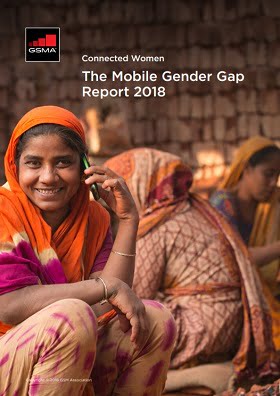
The Mobile Gender Gap Report 2018
Report
This report reveals for the first time the magnitude of the gender gap in mobile internet use across low- and middle-income countries, as well as highlighting the persistent gender disparity in mobile ownership and the barriers to ownership and use. Findings from this report are based on the results of...
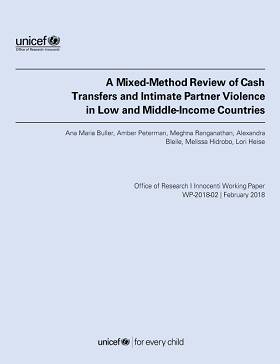
A mixed-method review of cash transfers and intimate partner violence in low and middle-income countries
Report
There is increasing evidence that cash transfer (CT) programs decrease intimate partner violence (IPV); however, little is known about how CTs achieve this impact. We conducted a mixed method review of studies in low- and middle-income countries. Fourteen quantitative and nine qualitative studies met our...
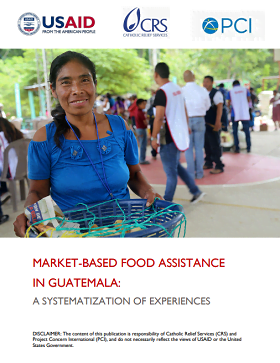
Market-based Food Assistance in Guatemala: A Systematization of Experiences
Guidelines and Tools
In April 2017, at the request of the United States Agency for International Development’s (USAID) Office of Food for Peace (FFP) in Guatemala, Catholic Relief Services (CRS) and Project Concern International (PCI) designed a process to gather and synthesize the experiences of food assistance...

Mainstreaming Gender-Based Violence Considerations in Cash-Based Interventions: A Case Study from Lower Juba, Somalia
Report
This case study provides an overview of assessment and monitoring activities
conducted by the Women’s Refugee Commission and Adeso to mainstream GBV considerations within Adeso’s CBI in Lower Juba.
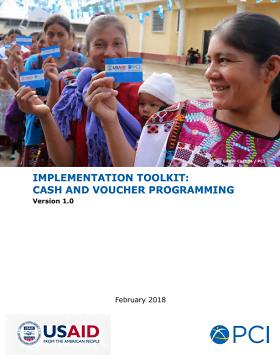
Implementation Toolkit: Cash and Voucher Programming
Guidelines and Tools
This set of tools developed by PCI seeks to harmonize language and approaches for use by teams involved in the design and implementation of cash transfer programs and is not intended to be a complete guide for design and implementation. The tool box focuses on the crucial steps within the program cycle of...

Mainstreaming Gender-Based Violence Considerations in Cash-Based Interventions: A Case Study from Zinder, Niger
Report
This case study provides an overview of assessment and monitoring activities undertaken by the Women’s Refugee Commission and Save the Children to mainstream gender-based violence (GBV) considerations in Save the Children’s cash-based intervention (CBIs) in Zinder. Key findings, learning and...

Collected Papers on Gender and Cash Transfer Programmes in Humanitarian Contexts
Report
Existing gender inequalities mean that disasters and conflicts impact women, men, girls and boys differently. Cash based assistance is one of the most significant developments in humanitarian assistance in recent years. But the relationship between gender and cash based assistance in humanitarian contexts...
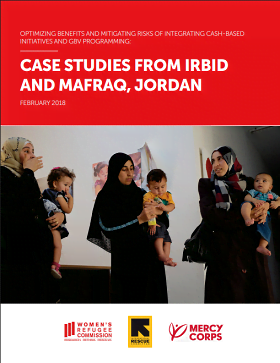
Optimizing Benefits and Mitigating Risks of Integrating Cash-Based Initiatives and GBV Programming: Case Studies from Irbid and Mafraq, Jordan
Report
This case study provides an overview of assessment and monitoring activities
conducted by Mercy Corps and the International Rescue Committee in partnership with the Women’s Commission to:
a. mainstream gender-based violence (GBV) considerations in cash-based interventions
b. utilize cash within a GBV...
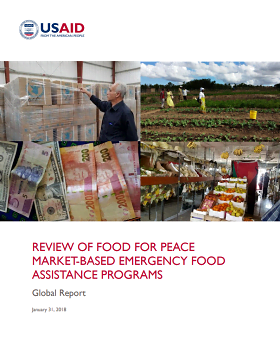
Review of Food for Peace Market-Based Emergency Food Assistance Programs Global Report
Report
Efficient and effective use of humanitarian funds is critical to meet the emergency needs of as many people as possible, especially as emergencies in developing countries have become more numerous, complex, and protracted. The United States Agency for International Development (USAID) Office of Food for...
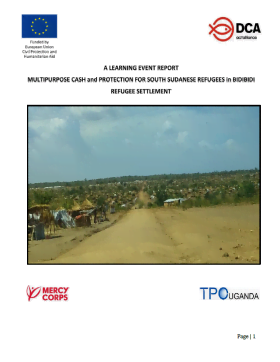
Multi-purpose Cash and Protection for South Sudanese Refugees in Bidibidi Refugee Settlement: A Learning Event Report
Report
This paper will present evidence on how cash transfers empowers conflict affected populations. The evidence is based on two projects implemented by DCA in Bidibidi Refugee Settlement in Uganda. Furthermore, the paper present evidence on how the two projects successfully linked cash and protection. 14, 520...
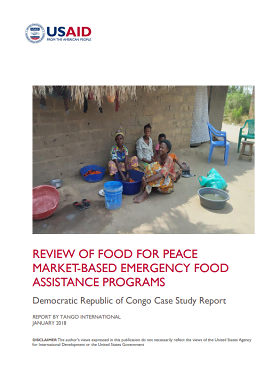
Review of Food for Peace Market-Based Emergency Food Assistance Programs: Democratic Republic of Congo Case Study Report
Report
The Democratic Republic of Congo (DRC) case illustrates the complexity and diversity of contexts within which program design and implementation occurs. It highlights the need for provincial-scale assessments, local market monitoring, and flexibility to pivot to different modalities depending on changing...
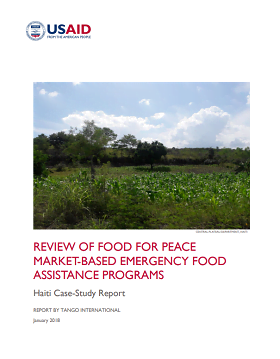
Review of Food for Peace Market-Based Emergency Food Assistance Programs: Haiti Case-Study Report
Report
Haiti is a very low-income country with a degraded ecological setting that faces repeated threats from multiple hazards. It is an excellent example of Food for Peace (FFP) linking emergency and development funding through the Kore Lavi Title II program that serves as a model for the national social...
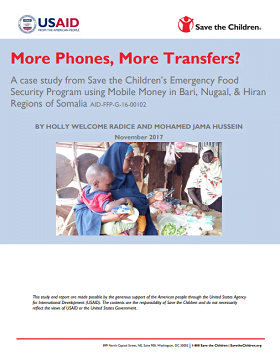
More Phones, More Transfers? A case study from Save the Children’s Emergency Food Security Program using Mobile Money in Bari, Nugaal, & Hiran Regions of Somalia
Report
In 2016-2017, with funding from USAID/FFP, Save the Children implemented a project targeting over 10,000HH the Bari, Nugaal, and Hiran regions of Somalia with monthly cash transfers using Mobile Money a partnership with Golis and Hormuud. The project sought to improve the food security situation in the...

Final Evaluation of the DiRECT Response Emergency Cash Transfer Programme in Zambia
Report
In the past two years (2015 and 2016), Zambia experienced relatively harsh climatic conditions characterised by disruptive rains and the negative impact of El Nino weather patterns. Districts in the southern and western regions of the country were most affected. Many farmers in the affected regions were...
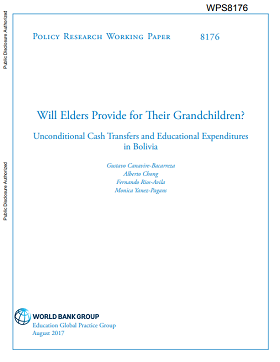
Will Elders Provide for Their Grandchildren? Unconditional Cash Transfers and Educational Expenditures in Bolivia
Report
This paper takes advantage of repeated cross-section household surveys and a sharp discontinuity created by the introduction of an unconditional cash transfers to elders.The paper evaluates the impact of these cash transfers on the educational expenditures for children within a household. The analysis...

Early Lessons Learnt from Cash Transfer Interventions in Post Matthew Haiti
Report
This technical report has twofold purposes, firstly to describe the main international evidence on cash transfer programing pertinent for the Haitian post Matthew emergency context; and secondly, to document the main lessons that can be learnt from the UNDP post Matthew cash transfer intervention. The...

Electronic Transfers in Humanitarian Assistance and Uptake of Financial Services
Report
The Electronic Cash Transfer Learning Action Network (ELAN) undertook case studies on humanitarian electronic transfer (‘e-transfer’) projects in Ethiopia, Zimbabwe and Bangladesh. The case studies examine the extent to which: recipients used digital financial services (e.g. money transfers, savings,...
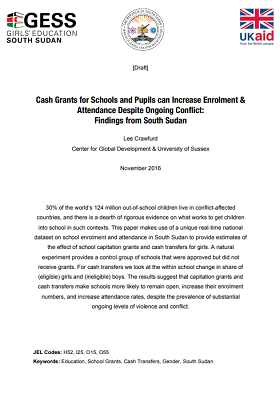
Cash Grants for Schools and Pupils can Increase Enrolment & Attendance Despite Ongoing Conflict: Findings from South Sudan
Report
This paper makes use of a unique, real-time national dataset on school enrolment and attendance in South Sudan to provide estimates of the effect of school capitation grants and cash transfers for girls.



